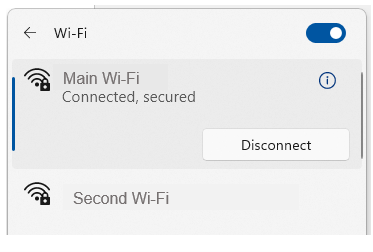Don’t worry, elections are safe. Our Security Researcher Cameron Camp provide us highlights from the DEF CON 30 conference.
The post DEF CON – “don’t worry, the elections are safe” edition appeared first on WeLiveSecurity
Don’t worry, elections are safe. Our Security Researcher Cameron Camp provide us highlights from the DEF CON 30 conference.
The post DEF CON – “don’t worry, the elections are safe” edition appeared first on WeLiveSecurity
The digital skills gap, especially in cybersecurity, is not a new phenomenon. This problematic is now exacerbate by the prevalence of burnout, which was presented at Black Hat USA 2022
The post Black Hat USA 2022: Burnout, a significant issue appeared first on WeLiveSecurity
Windows used to be the big talking point when it came to exploits resulting in mass casualties. Nowadays, talks turned to other massive attack platforms like #cloud and cars
The post Black Hat – Windows isn’t the only mass casualty platform anymore appeared first on WeLiveSecurity
Tinder, Bumble or Grindr – popular dating apps depend heavily on your location, personal data, and loose privacy settings. Find out how to put yourself out there safely by following our suggested settings tweaks.
The post Safety first: how to tweak the settings on your dating apps appeared first on WeLiveSecurity
A deep-dive in Zero-trust, to help you navigate in a zero-trust world and further secure your organization.
The post An eighties classic – Zero Trust appeared first on WeLiveSecurity
Whether you are getting ready for back-to-school season, getting new work laptop or fancying a new gamer’s pc, learn the steps to protect your new PC from cyberthreats.
The post Start as you mean to go on: the top 10 steps to securing your new computer appeared first on WeLiveSecurity
Learn to spot some of the threats that you can face while browsing online, and the best tips to stay safe on the web.
The post Staying safe online: How to browse the web securely appeared first on WeLiveSecurity
The heavyweights are now moving into API security, cementing it as “A Thing”
The post API security moves mainstream appeared first on WeLiveSecurity
It’s all fun and games until you get hacked – and this is just one risk of downloading cracked games
The post Play it safe: 5 reasons not to download pirated games appeared first on WeLiveSecurity
The number of internet-connected devices in homes has been growing. It’s increased exponentially over the last decade. A typical home now has 10.37 devices connected to the internet. PCs and mobile devices make up a little over half of those and the rest are IoT devices.
IoT stands for Internet of Things. It means any other type of “smart device” that connects online. IoT devices in a home can be everything from your streaming stick to your smart refrigerator. Smart baby monitors and Alexa voice assistants are also IoT.
There’s also been another change that has happened over the last couple of years. It has been the increase in remote and hybrid work. The pandemic caused a major shift in where we work, turning the standard office paradigm on its head.
Now, working remotely has become the norm for many companies around the world. This has put increased scrutiny on the security of all those IoT devices. They are now sharing a Wi-Fi network with business data and devices.
Here are two alarming statistics that illustrate the issue with IoT security:
Smart devices are a risk to any other device on a network. They are typically easier to breach. So, hackers will use them as a gateway into more sensitive devices.
A criminal may not care about the shopping list stored in your smart refrigerator. But they’ll breach that IoT device to see what other devices are on the same network.
The hacker can then use sharing and permissions that are often present on home networks. Through these, they gain access to your work computer or mobile device. These devices hold important data, and access to personal details.
Why are IoT devices less secure than computers and smartphones? Here are a few reasons:
Just about all modern routers will have the ability to set up a second Wi-Fi network, called a “guest network.” This shows up when you connect to Wi-Fi as a separate Wi-Fi that a device can use to get online.

By putting all your IoT devices on a separate network you improve security. You cut that bridge that hackers use to go from an IoT device to another device on the same network. Such as those that hold sensitive information (computers and mobile devices).
In fact, when you separate those two (IoT devices and sensitive-info devices) a hacker can’t see all. If they breach one of your smart devices, they can’t tell you have a PC or smartphone. This is because they’re on the other network.
This is an important layer of security to use. Whether you’re a remote worker or use your computer for home budgeting and banking, it can help. All PCs and smartphones usually contain access to online banking or personal information.
Here are the steps to take to separate your IoT devices. (Note, you can also have this done by us, we’ll be happy to handle all these steps for you.)
As you add any new devices to your home network, make sure to connect them to the appropriate network. This keeps the layer of security effective.
One more tip: When naming your Wi-Fi networks, don’t use descriptive names. This includes things like “IoT network” or your name, address, or router model name.
It’s best to use names that won’t give the hackers valuable information they can use in attacks.
With so many remote workers, hackers have begun targeting home networks. They know they can contain sensitive business as well as personal data. Don’t leave yourself open to a breach. Schedule a home internet security review today!
This Article has been Republished with Permission from The Technology Press.